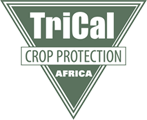Fumigant Products
Destructive pests such as nematodes, fungi, insects, weeds, and other pathogens can be devastating to a crop.
The chemicals listed below are registered in varying chemical formulations for maximum performance, safety, and environmental health.
Chloropicrin
Example trade names: Chloropicrin, Tri-Clor, Pic Plus, Strike, Pic-Clor
Safely used since: 1920s
Benefits: Excellent control of many fungal and bacterial pathogens; also controls some insects, and nematodes
Movement through soil: Good in well-tilled, non-saturated soil
EPA residue tolerance: Exempt, EPA determination - no residue in or on food
1,3-Dichloropropene
Example trade names: Telone®, InLine, Pic-Clor, Tri-Form
Safely used since: 1950s
Benefits: Excellent for preplant nematode control and when mixed with Chloropicrin, also controls numerous fungal and bacterial plant pathogens Movement through soil: Good in well-tilled, low moisture soil
EPA residue tolerance: Exempt, EPA determination - no residue in or on food
Many common soil-borne issues can be controlled with fumigation, such as:
- Common Pitted Scab
- Root Knot Nematode
- Phytophthora Wilt
- Pythium Root Rot
- Violet Root Rot
- Verticillium Wilt
![]() Download & Read
Download & Read
Chloropicrin and Soil Health
by John R. Washington, Ph.D.
|
Name |
Active |
Benefits |
Reg. No |
|
Pic Plus |
85.5% Chloropicrin 14.5% Solvent |
Excellent control of many fungal and bacterial pathogens. Also controls some nematode, insect, and weed species. |
L9554 |
| TRI-FORM 1,3-D | 97.5% 1,3-Dichloropropene 2.5% Soybean Oil, Epoxidized |
Excellent control of many fungal and bacterial pathogens. Also controls some nematode, insect, and weed species. |
L11U984 |
| TRI-FORM 1,3-D EC5 | 95% 1,3-Dichloropropene 5% Emulsifier - Proprietary |
Excellent control of many fungal and bacterial pathogens. Also controls some nematode, insect, and weed species. |
L11U984 |
| Tri-Form 40 | 40% Chloropicrin 60% 1,3Dichloropropene |
Excellent control of many fungal and bacterial pathogens. Excellent control of nematodes. Also helps control some insect and weed species. |
L11983 |
|
Tri-Form 60 |
60% Chloropicrin 40% 1,3Dichloropropene |
Excellent control of many fungal and bacterial pathogens. Excellent control of nematodes. Also helps control some insect and weed species. |
L9839 |
| Tri-Form 60 EC | 57% Chloropicrin 38% 1,3Dichloropropene |
Excellent control of many fungal and bacterial pathogens. Excellent control of nematodes. Also helps control some insect and weed species. |
L11982 |
|
Tripicrin |
100% Chloropicrin |
Excellent control of many fungal and bacterial pathogens. Also controls some nematode, insect, and weed species. |
L8306 |
| Tripicrin EC | 95% Chloropicrin 5% Surfactant |
Excellent control of many fungal and bacterial pathogens. Also controls some nematode, insect, and weed species. Label Datasheet |
L11986 |
